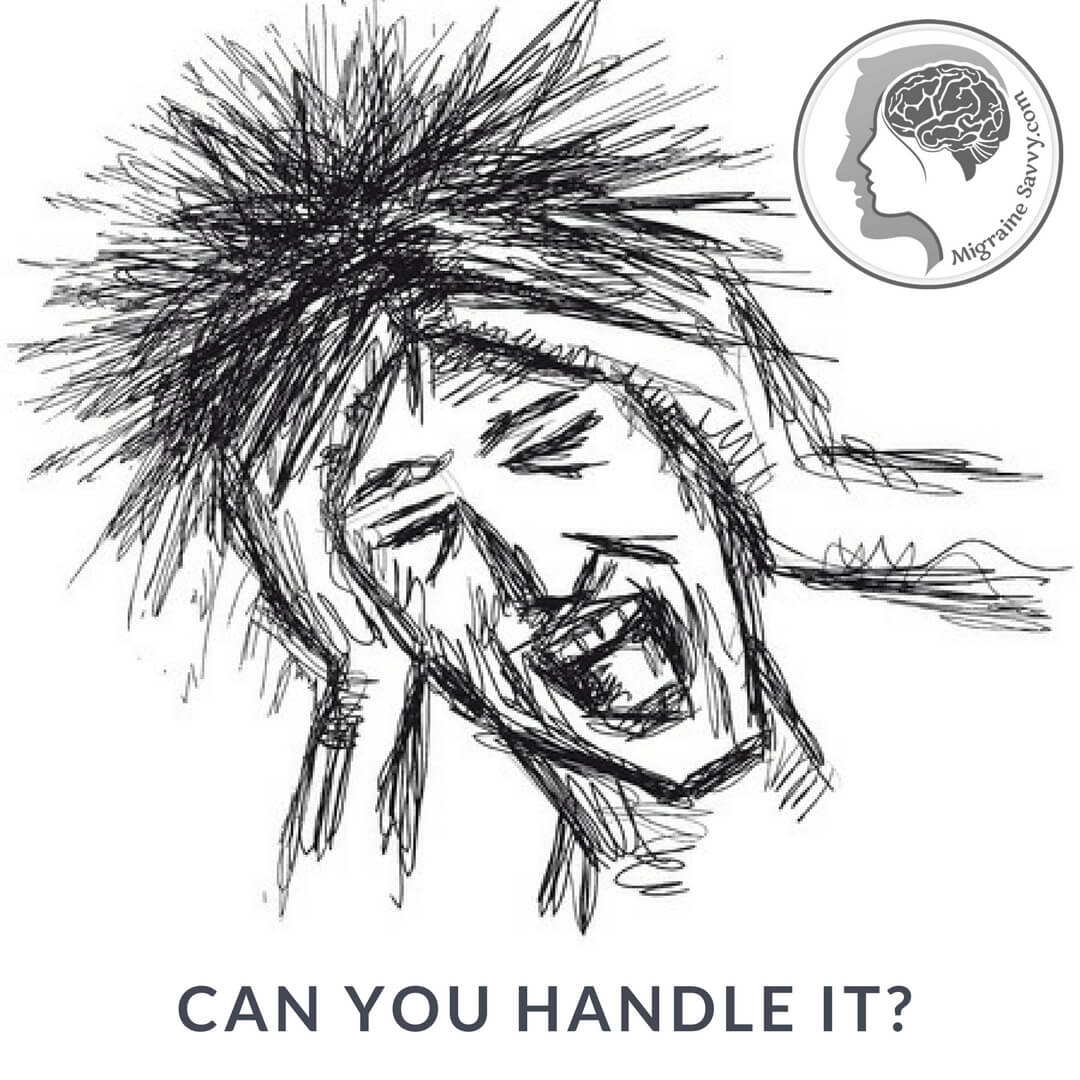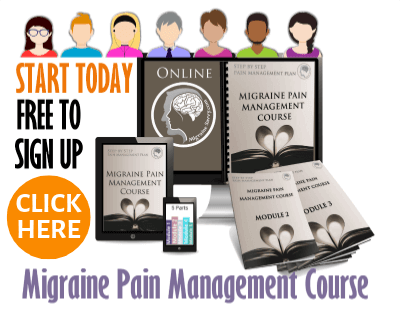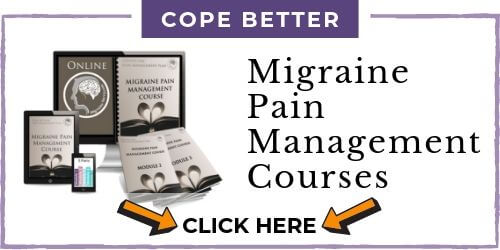- Home
- Prevention Tips
- How to Prevent Migraines
COMPLETE MAGNESIUM SUPPORT
My Top Choice - Magnesium Breakthrough - The ONLY supplement with all 7 essential magnesium types in one formula. Most only have 1-2 types, leaving you deficient.
How To Prevent Migraines By Managing Stress
Learning how to prevent migraines by reducing stress can be a crucial part of your migraine prevention plan. Managing stress is not as easy as to just stop worrying. Migraines can create havoc in your life, (probably why you are here now!) and the levels of stress can go up and up with each attack.
My #1 Choice in Magnesium Supplements
It can be easy to slip into being depressed and doing nothing about this medical condition.
You might experience failure after failure and not find out how to prevent migraines no matter how much money or time you spend experimenting.
Like Pavlov’s dogs that don’t even try to get out of their cage at the end of the experiment, after being continuously and repeatedly electronically shocked, even though the door is open.
Don’t let this be you.
Don't give up - I am here to tell you to persevere.
If I can do it, so can you!
Learning how to prevent migraines means you have to learn new coping skills, and stress management skills are essential.
There are things you can do right now... so let's get started.

8 Things That Will Help You Manage Stress
The information on this page is from my eBook Migraine Management.
1. Do physical exercise. Indoors, outdoors it doesn't matter. It can be dancing or chores around the house. Do half an hour everyday of something you love. Ok, you might not love housework, but do stuff you enjoy.
2. Learn a progressive muscle relaxation technique or breathing relaxation exercises. I always start with breathing ... more on that later. Here is an easy migraine relaxation technique you can use right now.
3. Listen to music that moves you emotionally. Have a good cry now and again. Or watch your favorite movie, just for something different watch one that makes you angry so you can process that too in the peace of your own home.
4. Talk to someone. Talk to a friend or find some professional pain counseling for some extra migraine support. It will help wonders to express your feelings with another compassionate soul who can listen to your woes and guide you.
5. Use visual distractions. This means: TV, movies, video games and yes - your computer if you can. Look out the window, look at the clouds, a tree or a flower. Looking at nature can help reduce stress.
6. Use physical distractions. Things like: arts and crafts, fix something, tinker, garden, just DO something. Move that body.
7. Find a replacement for worry. Use positive affirmations for migraines to retrain your brain to think more positively. And find a hobby, like: knitting, a jigsaw or crossword puzzle, draw, journal... etc. to preoccupy that busy mind.
8. Practice these new healthy habits daily. Yes every day until they become part of your routine. Half an hour everyday would be best, longer if you have longer. But the breathing you can do in 5 or 10 minutes. It does not have to take long to take a little time out. I have more tips below to help you with this bit... so keep reading.
Consciously choose to bring balance to your life.
What Does Your Stress Look Like?

In order to reduce your stress levels, you need know what it looks like in your body and then learn your limits.
Easier said than done!
It can be very hard to determine exactly when you get stressed out in today’s world with so many life pressures, and so many changes. You might not have time to process everything that is going on around you. Never mind having the added stress of a relentless, chronic illness like migraines.
So when you first notice you are feeling stressed out and anxious... what do you do? I always turn to the breath.
Close your eyes and just imagine being calm. Take at least three slow deep breaths. Imagine walking on a warm sandy beach, walking through an acreage of rose gardens, hear the silence inside of you, or whatever technique helps you tune in inside.
Now how do you feel? Have you slowed down a bit?
Learning to slow down and breathe deeply could be a key element to help you in preventing migraine attacks. Especially if you are prone to anxiety. But how to prevent migraines can be tricky. Here's a more detailed idea to work with your breath... inhale for the count of 3 and exhale for the count of 5. Pause at the top and bottom of the breath.
A longer exhalation will activate your Vagus nerve - your parasympathetic nervous system. It helps you rest and relax. It naturally lowers your heart rate, and blood pressure. There are more details in my eBook.
If you really want to learn how to prevent migraines, you will benefit from getting to know your body's signals... which brings me to this...
How to Prevent Migraines Using Body Awareness
Using body awareness to recognize when you are stressed out will help you learn how to prevent migraines.
Check your breathing – is it shallow and fast, or deep and slow? Tune into your breath and let it tell you if you are stressed. Put one hand on your heart and one on your belly – are your hands moving, or just one? Have you forgotten to breathe?
Notice your eyes – do they feel dry, strained?
How about your jaw? Is that clenched, or your buttocks, are they clenched?
What clue is your body giving you right now?
Does your stomach feel tight? How sore is your neck and back? Is there an all too familiar ache in your neck? How about your hands? Just tune in and notice each part of your body and see if it feels contracted or tense.
Your muscles will let you know if you are stressed. Now you need to find a way to relax them. You can read this migraine relaxation technique article, and any of my meditation for migraines articles.
I have found using body awareness to be a most useful tool to help me feel proactive in my migraine prevention.
It's Not Just How You React to Stress But What You Do About It
How to prevent migraines can relate to how you react to stress. And then how you treat your stress.
There are 3 ways that we all react to stress, you may have heard of these:
fight,
flight
and freeze.
Knowing which way you react is important to choosing what you might do for quick stress relief.
If you normally react in an angry or agitated way then you need to find something to calm you down like Yoga, Tai Chi or meditating.
If you flee, which translates as “shut-down or space out” then you need
something more active like: jogging or stretching. If you freeze,
perhaps a calming movement like just squeezing a stress ball might work.
Biological Reaction
Fight – angry, agitated, intense desire to fight back |
Your Conscious Choice
Yoga, Tai Chi, Meditation, Pattern Interrupt |
|
Flight – shut down, space out, intense desire to flee |
Jogging, Stretching, Tapping on your body |
|
Freeze – speeding up and slowing down at the same time, no desire |
Calming movements – squeeze a stress ball, breath work, body awareness, or experiment with an elastic band on your wrist to snap you out of it |
As you can’t just run off and do a meditation at work, or fight back in most cases, you need to find a quick action to take. Tony Robbins suggests pattern interrupt where you just say something silly and off topic whilst you are getting angry, for example.
So "the umbrella is red!" might work in the middle of a heated ‘discussion’ with your boss or husband. It's your choice if you say it out loud or just silently to yourself. Robbins suggests tickling your nose to interrupt your own pattern of getting angry.
My #1 Choice in Magnesium Supplements
Quick Stress Relief Tips From My Book
Eckhart Tolle says to think of two body parts at once. So, to get into your body, sense your hands on the table and your feet on the floor. Or sense your feet on the floor and your sitting bones on your chair. Wiggle your toes and imagine breathing down to them. Just take 3 nice deep breathes and see if that calms you.
For quick stress relief Jeanne Segal, PhD recommends using sensory input to put a change into action. A visual, sound, taste, smell, and touch, can all be used to change your nervous systems reaction. But this is learning a new habit, so you must do this daily before you retrain your brain.
Using Your Senses for |
Quick Stress Relief |
|
Visual |
Imagine your children as babies, or recall the last time you felt absolutely delighted. |
|
Sound |
Have your favorite music or relaxations on your iPad or MP3 player. |
|
Taste |
Carry your favorite snack, peppermints or little migraine free yummy. |
|
Smell |
Carry a bottle of essential oil with you, or anoint a handkerchief. Peppermint, lavender or rosemary are all good, if smell is not a migraine trigger. |
|
Touch |
Have a small crystal, piece of suede material in your pocket or wear a nice textured scarf around your neck. |
|
Movement |
Step back, walk away, turn around, and jump up and down on the spot. |
Developing emotional awareness by learning to recognize and connect your body signals with your emotions can help you:
- gain control over the way you react to challenges,
- improve your communication skills,
- and enjoy more fulfilling relationships.
How To Make This All A Habit

By making your awareness of body sensations important instead of dismissing them, you will learn how to prevent migraines. Timing is everything. You can learn about this for free in my e-Course.
Anyway, here are my tips:
1. Learn to recognize the stress in your body and then acknowledge it. Saying 'hello' works for me.
2. Make a list of the things that get you stressed. Start with something minor, not major! Maybe make two lists, you can work on the major things later when you are ready.
3. Just pick one thing. Spend a week on experimenting with that one thing.
4. Experiment to find what sensory input works best. Are you visual, auditory, or kinaesthetic? Try a different sense each day of that week.
5. Write down what works best for each stimulus. Commuting to work, dropping the kids off at school, grocery shopping, in those bright migraine trigger lights. What reduced the trigger the best for you?
I like a tissue with lavender essential oil on it for everyday things that might stress me out, or peppermint oil for nausea! I am kin-aesthetic so I am more soothed by touch, I carry a crystal in my pocket, and I have learned to take a step back and say ‘pause’ silently to myself before I get angry. This is still a work in progress!
6. Remember to do it! There's a great way to do this, but I can't give everything away from my book now can I!
And one more thing, fit in balance, variety and fun in your day.
Make sure you have a migraine pain management strategy from your doctor, so that is one less thing to stress about. How to prevent migraines is different for everyone so like I said, keep experimenting to find what works for you.
More Tips On How To Prevent Migraines
Here are some more helpful tips on how to prevent migraines:
- Check out the migraine prevention section.
- Consider building your own migraine prevention kit.
- Get my eBook: Migraine Management with downloadable worksheets on the exercises mentioned above.
Stay well,
My #1 Choice in Magnesium Supplements
WANT MORE TIPS? Subscribe to my newsletter and follow along on Facebook and Pinterest for all of the latest updates.
MIGRAINE PREVENTION Related Articles
How to be more MIGRAINE SAVVY right now...
How to Prevent Migraines References:
1. Bourne, E. J. PhD., (2000) The Anxiety and Phobia Workbook. Harbinger Publications, Inc.: New York, NY. pp. 433-434.
2. Segal, J. Ph.D., Smith, M. M.A., and Robinson, L. (2016) Stress Relief in the Moment. [Online] Available: https://www.helpguide.org/articles/stress/quick-stress-relief.htm Access Updated Nov. 28, 2020.


















